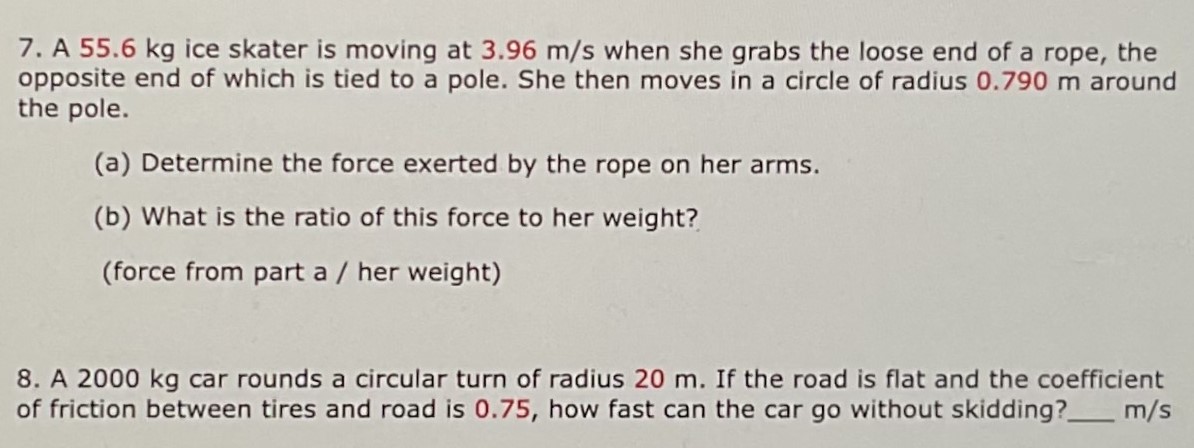A 55.6 kg ice skater is moving at 3.96 m/s when she grabs the loose end of a rope, the opposite end of which is tied to a pole. She then moves in a circle of radius 0.790 m around the pole. (a) Determine the force exerted by the rope on her arms. (b) What is the ratio of this force to her weight? (force from part a / her weight) A 2000 kg car rounds a circular turn of radius 20 m. If the road is flat and the coefficient of friction between tires and road is 0.75 , how fast can the car go without skidding? m/s
